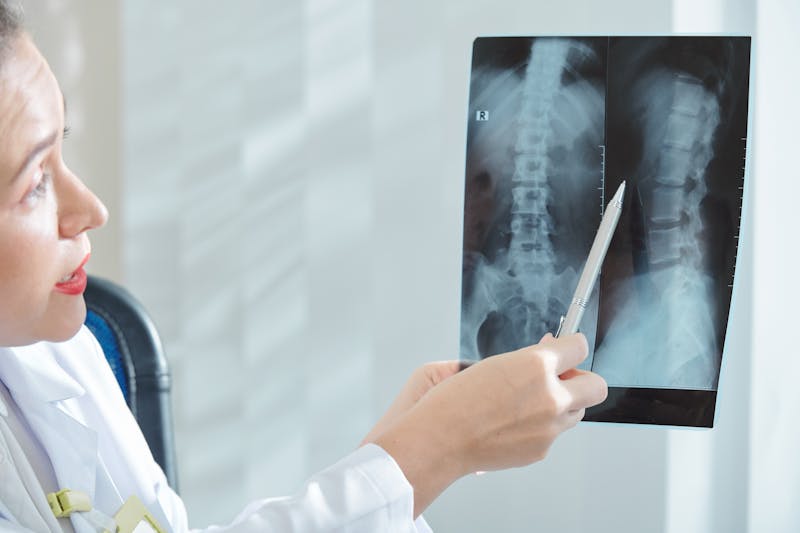Spinal fusion

Spinal fusion, also called spondylodesis, is the surgical technique to correct problems related to the bones in the spine (vertebrae). In this procedure one or more vertebrae are fused together permanently, using bone graft so that there is no movement between them. It could be performed anywhere on the spine, but is most commonly performed in the lower back and neck. Bone graft stimulates bone healing and provides immediate structural support to the vertebrae. Graft can be taken from patients own body (autograft) or from other individual/ cadaver (allograft). It is recommended if your back or neck pain has not improved with other conservative approaches.
When is spinal fusion recommended?
There are many potential reasons for a surgeon to recommend fusion surgery. These includes:
- Degenerative disc disease
- Spinal tumor
- Spondylolisthesis
- Fractured vertebrae
- Herniated disc
- Severe back pain
Procedure
There is number of techniques and approaches that may be used to fuse the spine. It can be approached anteriorly, posteriorly or by a combination of both. In anterior and posterior approach, your surgeon may approach the spine from the front and back respectively. Similarly, in lateral approach, your surgeon may approach your spine from the side.
Spinal fusion surgery is performed through a very small incision which produces minimal scarring and lowers the risk of blood loss and infection. Your doctor will start the procedure by giving you general anesthesia, so you will be asleep during the surgery. After the incision, surgeon will gently push aside the muscles and inserts the graft in between the injured vertebrae. Over time, these grafts will fuse the spine and forms a single solid bone.
How fusion works?
Spinal fusion eliminates the motion between the bones. The fusion area is often held together with instrumentation like meal plates, rods or screw. This increases the rate of successful healing.
Risks
Like all surgeries, spinal fusion carries risks. Potential risks of spinal fusion includes-
- Infection
- Bleeding
- Pseudartrosis
- Pain
- Recurring symptoms
- Nerve damage
- Blood clots
After surgery
After surgery it is normal to feel pain. It might take several months before the bones fully fuse. Your doctor will prescribe medications to alleviate the pain and discomfort. He will also provide you specific instructions (do’s and don’ts) that need to be followed for successful surgery.
DISCLAIMER
This web page provides general information and discussions about health, medicine and related subjects. The information and other content provided on this website, or in any linked materials, are not intended and should not be construed as medical advice, nor is the information a substitute for professional medical expertise or treatment.
The content is for information purpose only and is not a medical advice. Qualified doctors have gathered information from reputable sources; however Credence Medicure Corporation is not responsible for errors or omissions in reporting or explanations. No individual should use the information, resources and tools contained herein to self diagnose or self treat any medical condition.
If you or any other person has a medical concern, you should consult with your health care provider or seek other professional medical treatment. Never disregard professional medical advice or delay in seeking it because of something that have read on this blog or in any linked materials. If you think you may have a medical emergency, call your doctor or emergency services immediately.
The opinions and views expressed on this blog and website have no relation to those of any academic, hospital, health practice or other institution. Credence Medicure Corporation gives no assurance or warranty regarding the accuracy, timeliness or applicability of the content.
